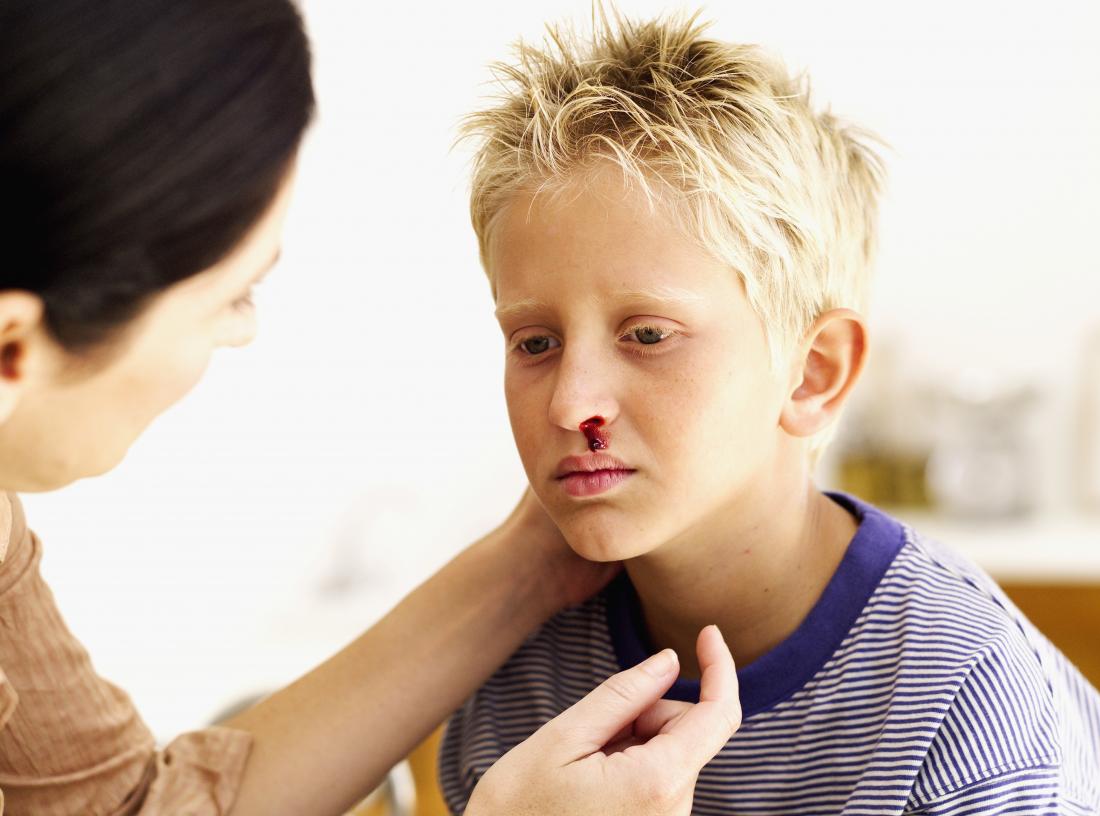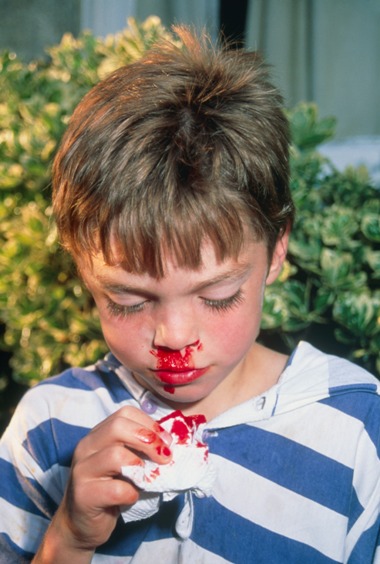- Get link
- X
- Other Apps
The medical word for nosebleed is epistaxis. As the skin overlying the capillaries dries out theres less protection for those capillaries making them more likely to break open.
 Dealing With Nosebleeds In Children Boston Children S Hospital Thriving Blog
Dealing With Nosebleeds In Children Boston Children S Hospital Thriving Blog
If the child often gets nosebleeds or nosebleeds that are hard to stop have a doctor examine the child.

Nose bleeds in children. The inside of the nose is delicate and the small blood vessels are fragile and close to the surface. 2132020 a child under two years of age has a nosebleed this is rare and theres a chance its caused by something serious you have nosebleeds that come and go regularly Ask someone to drive you to your nearest accident and emergency AE. Your childs nasal lining is still quite delicate as they are still growing therefore they tend to.
A retrospective analysis of Accident and Emergency department attendance records and hospital admissions reported 16 cases of nose bleed within this age group. This part of the nose has many tiny blood vessels. 5222017 Most nosebleeds in kids are caused by dry air.
A nosebleed is bleeding from tissues inside the nose nasal mucus membranes caused by a broken blood vessel. This means they can. The bleeding that occurs from the membranes of the mucus from the nose front majorly oozes out of a single nostril.
A child under 2 years old has a nosebleed you have regular nosebleeds you have symptoms of anaemia such as a faster heartbeat palpitations shortness of breath and pale skin youre taking a blood-thinning medicine such as warfarin. Recurrent nosebleeds happen because part of the lining of the nose has become chronically irritated and the blood vessels exposed. Nosebleeds are common in children.
Most nosebleeds in children occur in the front part of the nose close to the nostrils. 11282018 Some children sleep through nosebleeds and swallow the blood then vomit or cough it up onto their bedsheets which can seem scary but nighttime nosebleeds normally are not a concern if they occur less frequently than once per month. Keep them upright and gently tilt their head forward slightly.
This is especially true of many nighttime nosebleeds. Key points about a nosebleed in children A nosebleed is bleeding from tissues inside the nose nasal mucus membranes caused by a broken blood vessel. 5312016 An anterior nosebleed is the most common with blood coming from the front of the nose.
The common reasons often related to anterior nosebleeds. However if the bleeding occurs from a higher nasal cavity then you might notice the blood flow from both the nostrils. 462021 Some children will experience frequent nosebleeds from time to time.
Key points about a nosebleed in children A nosebleed is bleeding from tissues inside the nose nasal mucus membranes caused by a broken blood vessel. Most of the time they are not due to a serious condition. Nosebleeds are common in children.
932018 Mostly the nosebleeds in kids happen due to drying effect or irritation caused due to over drying of nasal membrane thus some of the tips for frequent nosebleeds in children In order to prevent the child from hurting himself herself while nose picking keep the nails trim and short. A nosebleed also called epistaxis occurs when a small blood vessel in the lining of the nose bursts. A nosebleed can look scary but is usually not a serious problem.
Siddiq and Grainger 2015. These can be damaged easily. Nosebleeds are common in young children.
A nosebleed can look scary but is usually not a serious problem. Its caused by the rupturing of tiny blood vessels inside. A person should consult a doctor.
A few nosebleeds each year is no big deal but when it happens a few times each weeks this is more worrisome to parents. During dry climate or winter the nasal passages may dry out leaving the blood vessels fragile and prone to rupture. A ruptured blood vessel leads to nosebleeds 3.
Pinch the soft part of the nose below the nasal bridge. Children do not come to any serious harm from. 6192020 There are common and less common causes of nosebleeds in teenagers.
What is a nosebleed in children. Epistaxis is rare in children under 2 years of age and an underlying cause such as injury or coagulopathy should therefore be considered Patel et al 2014. 11122018 The most evident and visible symptoms of nosebleeding are blood running out of the nose of your child.
Nosebleeds are very common in children. Most nosebleeds in children are due to dry air nose picking nasal allergies or other factors that irritate the delicate blood vessels in the front of the nose. Try to maintain pressure for about 10 minutes.
While they can be quite alarming there is usually no reason for you to panic. Here are some steps on how to control nosebleeds among children.
 Nosebleeds In Kids Types Reasons Treatment
Nosebleeds In Kids Types Reasons Treatment
 All About Nosebleeds In Children Rekord East
All About Nosebleeds In Children Rekord East
 Nosebleeds In Children When To See A Doctor Causes And Prevention
Nosebleeds In Children When To See A Doctor Causes And Prevention
 Kids Health Information Nosebleeds
Kids Health Information Nosebleeds

 What To Do When Your Child Gets A Nosebleed Parentscanada
What To Do When Your Child Gets A Nosebleed Parentscanada
 Nosebleeds For Parents Nemours Kidshealth
Nosebleeds For Parents Nemours Kidshealth
 Nhs 111 Wales Encyclopaedia Nosebleed
Nhs 111 Wales Encyclopaedia Nosebleed
 Nosebleeds In Children How To Stop And Prevent
Nosebleeds In Children How To Stop And Prevent
 Nosebleeds In Children When To See A Doctor Causes And Prevention
Nosebleeds In Children When To See A Doctor Causes And Prevention
 Nosebleeds In Children Ask Dr Sears The Trusted Resource For Parents
Nosebleeds In Children Ask Dr Sears The Trusted Resource For Parents
 Nosebleeds In Children Epistaxis Mr Daniel Tweedie Consultant Paediatric Ent Surgeon London
Nosebleeds In Children Epistaxis Mr Daniel Tweedie Consultant Paediatric Ent Surgeon London


Comments
Post a Comment